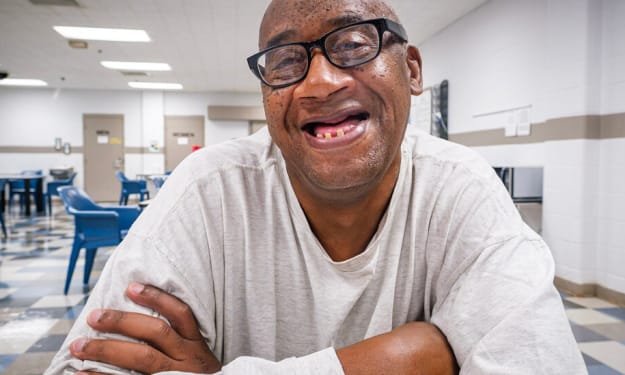The Victims of Capital Punishment
Capital punishment's history in lynching

In 1893, Henry Smith was brutally murdered.
Smith was a Black labourer from Paris, Texas, who was accused of murdering and raping a four-year-old girl. The young white girl, Myrtle Vance, was the daughter of a local policeman who had beaten Smith while he was detained in prison.
Tragically, the young girl was physically harmed by Smith, but local and national newspaper reports fabricated the rape and other grisly details surrounding the murder.
After conducting a thorough study into Vance's tragic death, investigative journalist Ida B. Wells found Smith had been severely intellectually disabled: a fact that did not placate him of guilt but, according to her, partially explained his poor reasoning. After speaking with residents of the community, Wells concluded:
As a matter of fact, the child was not brutally assaulted as the world has been told in excuse for the awful barbarism of that day. Persons who saw the child after its death, have stated, under the most solemn pledge to truth, that there was no evidence of such an assault as was published at that time, only a slight abrasion and discoloration was noticeable and that mostly about the neck.
Nevertheless, Smith's attack - which, by then, had garnered mass attention from the press - was enough for the town to exact brutal, torturous revenge. The New York Times boasted about the impending execution in the following terms:
The negro Henry Smith, who assaulted and murdered four-year-old Myrtle Vance, has been caught and will be brought here tomorrow.
He will be burned alive at the scene of his crime tomorrow evening.
All the preparations are being made.
The community erected a large wooden platform reminiscent of executions in England during the "Bloody Code," where the executions of criminals were highly public affairs meant for the amusement of townsfolk. Indeed, the gruesome killing of Henry Smith served the same purpose. He was paraded around town on a carnival float before being tortured and burned alive.
Descriptions of Smith's brutal murder in Texas's Fort Worth Gazette used sensationalized language to celebrate his every cry of agony and moment of unparalleled pain. When Smith died, people flocked to the platform to gather pieces of his flesh as souvenirs. Photographs and postcards of his corpse were distributed for the pleasure of white observers and tourists.
While the governor of Texas issued a vague statement in condemnation of the gruesome spectacle, the men who lynched Smith were never charged.
Even with many Americans from across the country expressing shock at Smith's dehumanizing and horrific death, lynchings would continue. In the decades after, ritualized executions meant to excite white residents and terrify Black onlookers became a staple of the American experience, especially in the Jim Crow South.
Contrary to popular opinion, the lynchings of Black men such as Smith do not comprise a distant remnant of the past. Only now, Black people are murdered through legal processes instead of at the hands of angry mobs.
Internet reactions to capital punishment
I wrote a piece about the death of Ernest Lee Johnson, a disabled Black man from Missouri who was killed by lethal injection on October 5th, 2021. Johnson was convicted of the 1994 murders of three convenience store workers during an armed robbery.
I argued Johnson's plea for execution by firing squad, due to a long-standing disability that would have made a death by lethal injection extremely painful, was ignored because of his race.
Though I believe the death penalty is wrong no matter the individual's skin color, it has been proven countless times that Black men are over-represented as inmates on death row, even compared to the number of violent crimes they commit. Therefore, like many other contemporary topics, we cannot approach the question of the death penalty with from a "color blind" perspective.
I also argued the death penalty is unequivocally immoral, because of how new evidence is constantly discovered. Death is final and irreversible. If a prisoner is killed, new evidence cannot be examined, even if it is evidence that could reverse their sentence. The Innocence Project found eighteen people have been exonerated by DNA testing in the United States after being on death row.
The backlash to my article, on one platform in particular, about Johnson was swift and fierce.
Commentators rejoiced over Johnson's execution. Thousands of people - some of them branded by surprisingly pleasant profile pictures and endearing pet photos - littered the comments with appallingly racist, and often misspelled, epithets. People literally claimed they were glad another Black person had died.
Not one of these noted the clear hypocrisy of white serial killers being given life sentences while Black men who commit lesser crimes are executed. On November 19th, 2021, 18-year-old Kyle Rittenhouse was acquitted of all charges against him, despite having killed and injured a total of three people. While I do not believe Rittenhouse should be given the death penalty, I am certain he would have been executed if he were Black.
The undeniable racism of capital punishment
Though one could dismiss the deafening backlash as harmless internet trolling, the racist reactions to Johnson's death are representative of common beliefs about the death penalty in America during the twenty-first century. Internet "trolling" reveals what happens in the dark chambers of an individual's mind, away from public facades.
Many of these ideas stem from the era of lynching, when Black men like Henry Smith were violently beaten and lynched to the amusement of white spectators. The enthusiasm with which online commentators met Ernest Lee Johnson's death was not unlike that of the men and women selling postcards with pictures of Henry Smith's brutal murder. They glorified the violence of a Black death made public by news stations and televisions and articles like mine.
According to historian James W. Clarke, lynchings were eventually replaced by capital punishments. When community leaders in southern states realized the economic and social consequences of lynchings were profound, they responded with "a more palatable form of violence." Lynchings upset northern sensibilities, but capital punishment seemed less violent - despite many executions still being botched, resulting in excruciatingly painful deaths for victims.
Evidence of capital punishment replacing lynchings can be seen in the places where it is most used and the people it is used against. Studies have found executions take place in former "slave states," where lynchings were once commonplace.
Black men are also over represented on death row, despite committing less violent crimes on average than their white counterparts, according to the US Department of Justice. This contradicts the racist stereotype that Black men are more prone to criminality than white men, which itself ignores the reality of racial bias on every level of the American justice system.
Although President Biden promised to abolish the death penalty, its disproportionate use against Black men remains a sobering reminder of lynchings, which continue today.
About the Creator
Ilana Quinn
I am a student who loves writing about history, travel, faith and life experiences. Feel free to check out more of my writing at https://linktr.ee/ilanaquinn :)






Comments
There are no comments for this story
Be the first to respond and start the conversation.